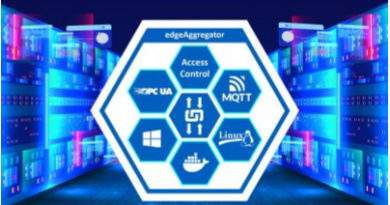Deciphering the Budget : A Leap towards Developed India
Hi there, I’m sure you’re curious about the latest budget that was announced by our Finance Minister. It’s a very important document that affects our economy and our lives. Let me break it down for you in simple terms. First, the budget is called an *Interim Budget* because it’s not the final one. It’s a temporary one that will be revised after the general elections later this year. So, don’t get too attached to the numbers and the policies just yet. The main theme of the budget is to boost the capital expenditure, which means the money that the government spends on building infrastructure, such as roads, bridges, railways, airports, etc. These projects create jobs and improve the quality of life for the people. The government has increased the capital expenditure by 11.1% compared to last year, which is a big jump, especially considering that it was increased significantly last year. It’s also 3.4% of the GDP, which is the total value of goods and services produced in the country. This shows that the government is serious about investing in the future of the country. The second point is about the Real GDP growth, which means the growth of the economy after adjusting for inflation. The government expects the economy to grow by 7.3% in the next financial year, which is higher than the previous estimate of 6.5%. This is good news because it means that the economy is recovering from the pandemic and the lockdowns. The RBI, which is the central bank of the country, also agrees with this projection. They have raised their growth forecast from 6.5% to 7% based on the strong performance of the economy in the second quarter of the current financial year. This shows that the government and the RBI are on the same page when it comes to the economic outlook. The third point is about the upliftment of marginalized segments, which means the people who are poor, women, youth, and farmers. The government has made these groups its highest priority and has announced various schemes and programs to help them. For example, the government has created a fund of ₹1 lakh crore to provide interest-free loans to the youth for starting their own businesses or pursuing higher education. This will encourage entrepreneurship and innovation among the young generation. The government has also continued the scheme of providing interest-free loans to the states for their capital expenditure. This will enable the states to spend more on their own development projects and create more opportunities for the people. This initiative augurs well with the idea of Viksit Bharat by 2047. The fourth point is about the all-round development approach, which means the government wants to develop the country in a balanced and holistic way. The government has a vision of making India a developed economy or Viksit Bharat by the year 2047, which will mark the 100th anniversary of our independence. The government has also focused on the Eastern region of the country, which has been historically neglected and underdeveloped. The government wants to make the Eastern region a powerful driver of India’s growth and has allocated more funds and resources for its development. The fifth point is about the challenges related to population growth and demographic changes, which means the problems and opportunities that arise from the changing population and age structure of the country. India has a very large and young population, which can be a great asset if utilized properly. However, it can also pose some challenges, such as providing education, health, employment, and social security to the people. The government has formed a high-powered committee to study these issues and suggest solutions. The government also recognizes the need for strategic planning to manage these dynamics effectively and ensure the well-being of the people. The sixth and final point is about the taxation and direct tax demands, which means the taxes that the government collects from the people and the businesses and the claims that the government makes on them. The government has not made any changes in the tax rates in the Interim Budget, which means that you will pay the same amount of tax as before. However, the government has done a good thing by withdrawing some of the petty and disputed tax demands that were pending for a long time. These were the cases where the government and the taxpayers had a disagreement over the amount of tax to be paid. The government has decided to drop these cases and save the time and money of both the parties. This will benefit about one crore taxpayers and improve the tax compliance and trust in the system. In all we can surely consider that this government is serious about overall development and continuity of major policies, which is evident by the fact that they didn’t try to dole out any freebies even though it’s a crucial general election year. Looking forward to seeing the similar theme played when the final budget will be presented post the general elections.



